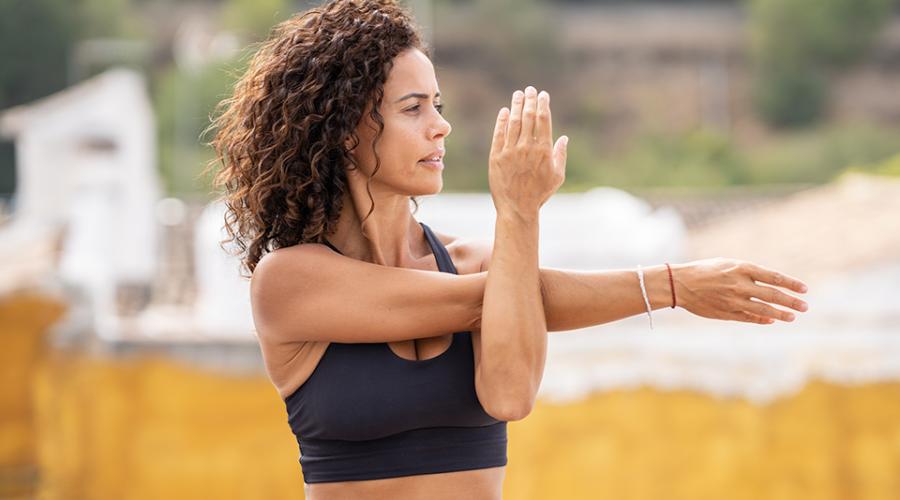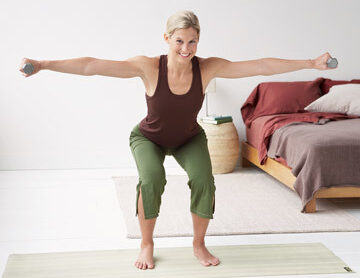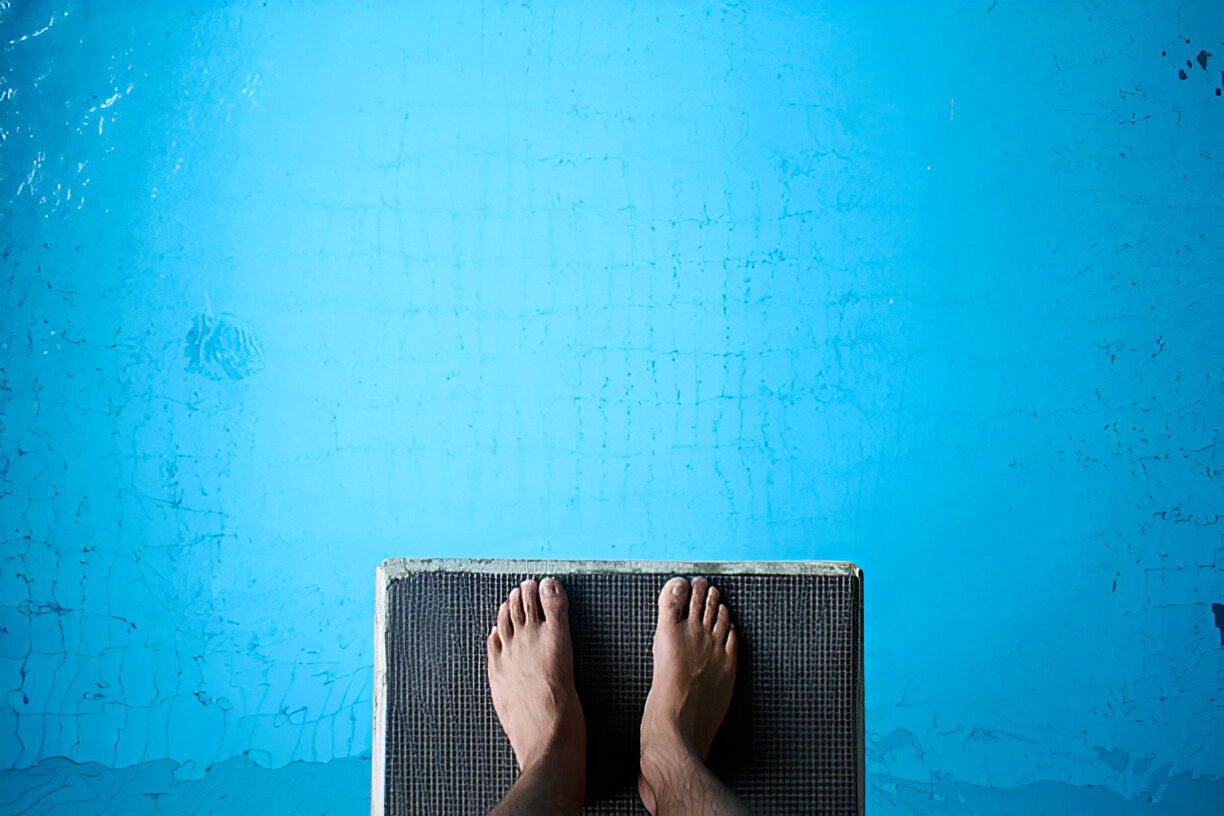
The way you sleep at night can make a huge difference in how you feel during the day. Discover potential pitfalls of your slumber style and how to fix ensuing aches and pains. You spend about a third of your life sleeping; it’s time that should feel relaxing and mentally and physically restorative.
But depending on the position you rest in, your nightly slumber could contribute to a range of daytime problems. Pain in the lower back and neck, numbness in your arms and fingers, chronic shallow breathing (which, in turn, leads to low energy) — these can all result from snuggling up the “wrong” way.
“Sleep is when your body recovers,” says chiropractor Lisa Kirsch of Tribeca Chiropractic in New York City. “If your sleeping position forces your spine out of alignment or compresses your muscles, nerves, or organs, your body can’t heal itself effectively.”
The ideal position? On your back with no pillow, says Jonathan FitzGordon, an alignment specialist in private practice in Brooklyn, New York. “It’s optimal because it allows your spine to rest with its natural curves in place.” But if you can’t fall asleep that way — or if you unconsciously roll into other positions — you can still take steps to mitigate any resulting problems. To that end, Kirsch and FitzGordon helped us identify the three most common troublesome sleeping styles –and key stretches to counteract their ill effects.
“Animals stretch as soon as they wake up,” says FitzGordon. “Kids do, too. Sadly, adults don’t.” All it takes is about 10 minutes each morning to reinvigorate yourself, say our experts. So roll out of bed and make the following moves part of your wake-up routine.
Side with Arms Under Head

It may feel comfy, but resting your head (which weighs, on average, 10 pounds) on your arm for hours at a time stresses the body. “This position presses on the nerves that run through the top of the shoulder and down the arm, resulting in numbness in your fingers,” FitzGordon explains. The shoulder you sleep on also gets hiked up toward your ear, which constricts the muscles of the shoulder and neck.
Pillow talk
If you’re a side sleeper, look for a pillow that fills the space between your ear and the outer edge of your shoulder when you’re lying on your side. “Your pillow should enable both sides of your neck to be equally long,” FitzGordon says, which promotes easier breathing and prevents overstretching on one side of your neck. Any pillow that maintains its shape (foam, for instance) is fine. To keep you from hiking one leg up, which rotates the pelvis and contorts the lower spine, Kirsch suggests placing a pillow that is 6 to 8 inches high between your knees.
Fix: Shoulder stretch
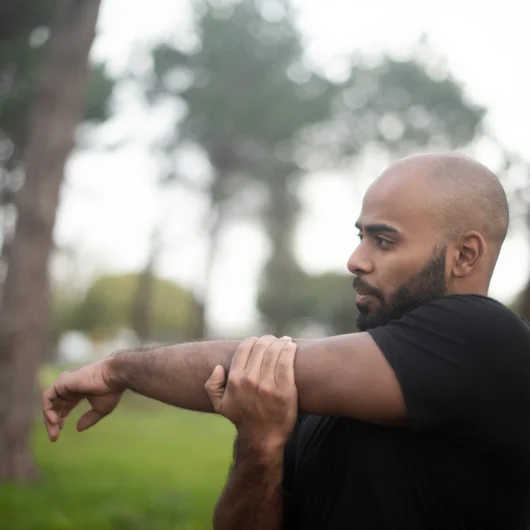
What it does
Stretches the back of the shoulders, which tend to get compressed by the weight of your head.
How to do it
Sit tall, core tight, and extend your left arm straight out to your side at shoulder height, palm facing down. Now reach that arm across your chest and use your right hand to draw it in closer to you. Relax for five breaths, then switch arms. Stretch each side three times.
Fix: Cow Face Pose
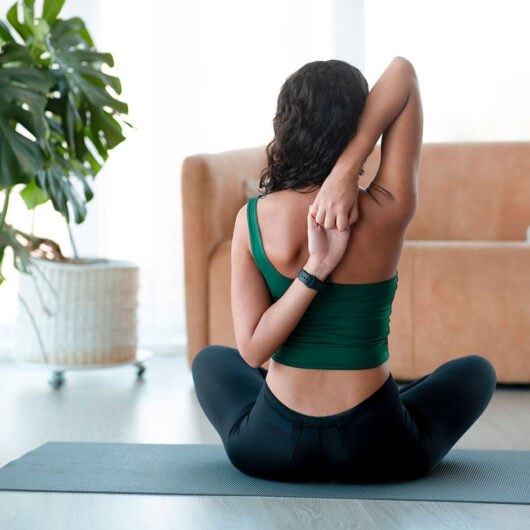
What it does
Stretches and brings balance to the muscles of the neck as well as the shoulders. Opens the chest.
How to do it
Hold a strap in your right hand. Standing with your core tight, raise your right arm straight up and turn your hand so the palm faces behind you. Now bend your elbow and bring your hand as far down your back as you can. Reach the left arm straight out to your side, then turn your palm to face behind you. Bend your left elbow and bring your left arm behind your back; grab the strap with your left hand. Relax for five breaths. Repeat on the other side.
On Stomach
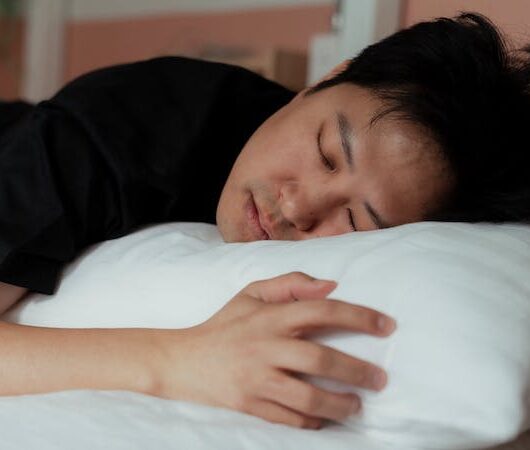
“Sleeping on your stomach is the worst position for your spine,” FitzGordon says. It flattens the natural curve in the lower back and keeps your head turned to one side all night, which distorts the alignment of the spine in your neck. All of this leads to chronic lower back pain, neck pain, and headaches. And because your body weight compresses your lungs, stomach sleeping also impedes your ability to breathe deeply.
Pillow talk
Kirsch implores her stomach-sleeping patients to change their habits altogether. She recommends investing in a body pillow (go with the long, thin rectangle or cylinder style) to make side sleeping more compelling. It mimics the pressure on the front of the body that sleeping on your stomach offers, she says, but without compressing your organs. “Placing a body pillow between your knees and hugging it with your arms will keep your pelvis, shoulders, and spine balanced,” she says.
Fix: Side Stretch
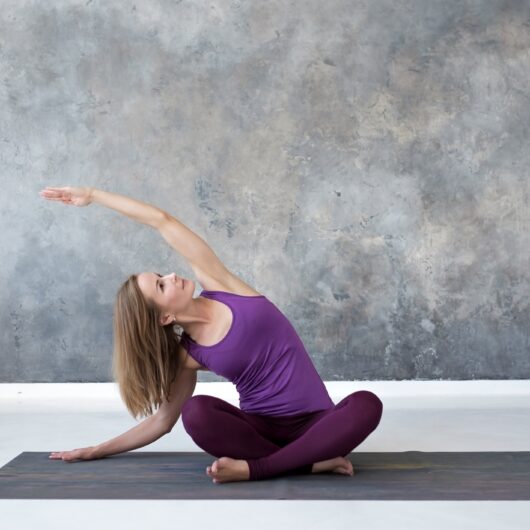
What it does
Opens the sides of the torso, creating more space for the lungs to expand. Stretches the quadratus lumborum, thus helping to maintain a proper lower back curve.
How to do it
Stand tall with abs engaged and hands clasped behind your head. Keeping your spine long, bend to the right as if making a rainbow shape with your torso; go as far as is comfortable. Stay five breaths, breathing naturally, then return to the starting position. Repeat to the left. Stretch each side three times.
Fix: Easy Bridge Pose
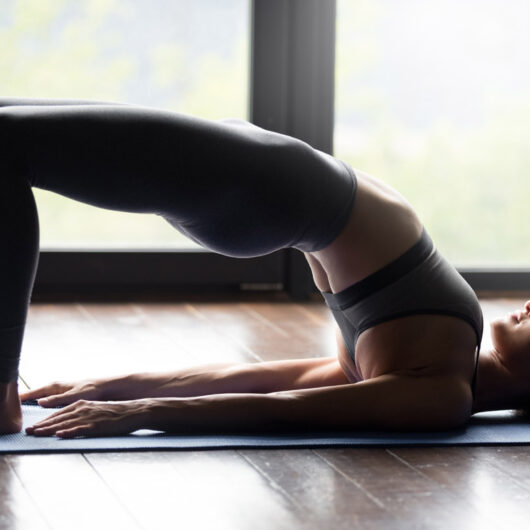
What it does
Restores the curve in the lower back, which helps restore your neck’s alignment as well. Opens the chest and stretches the diaphragm, improving your ability to breathe deeply.
How to do it
Lie on your back with your knees bent and feet flat, about 12 inches from your hips. To a count of three, reach your arms overhead and lift your hips off the floor; your head, arms, shoulders, and feet remain grounded. Keep your butt soft and core tight as you hold the stretch for a count of three. Now lower your arms and roll your spine, one vertebra at a time, back down to the mat. Repeat five times.
On the back with a big pillow
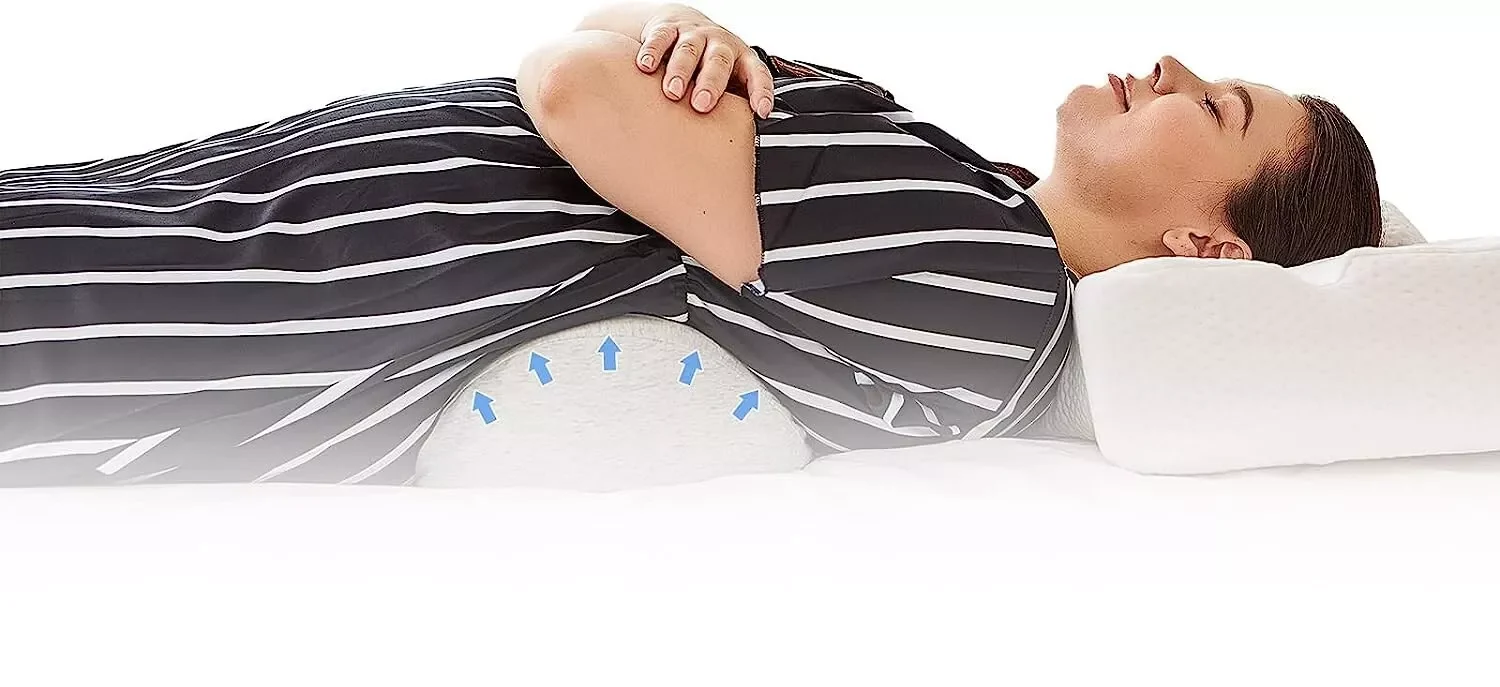
Although sleeping on your back may seem innocuous, if you’ve got a thick pillow under your head, your neck pays a steep price. “A thick pillow pushes your head forward, exactly opposite the natural curve of the spine in the neck,” says Kirsch. Neck pain and headaches can result. This position also impedes the flow of air through your throat and closes off the top of the chest, which decreases breathing capacity.
Pillow talk
Back sleepers who still want a pillow should choose the thinnest one they can stand. A soft down pillow compresses the most. If you often wake up during the night with a neck ache or headache, Kirsch recommends keeping a small neck-roll pillow (such as the Silk Neck Pillow, available at huggermugger.com ) on hand: Remove your pillow and place the roll under the back of your neck for several minutes to reset the spinal curve and ward off further pain, then go back to sleep using your usual pillow. Or create your own neck roll by tightly rolling a thin bath towel.
Fix: Neck Release

What it does
Balances and stretches the neck muscles, freeing the vertebrae in your neck to find their natural alignment.
How to do it: Sit tall on the edge of a chair. Drop your right ear toward your right shoulder until you feel a strong yet bearable stretch. Hold for five breaths. Return to center, then drop your left ear toward your left shoulder and hold for five breaths. Return to center. Turn your head as far as you comfortably can to the right; stay for five breaths. Come to center. Repeat to the left.
Fix: Reclined Heart Opener
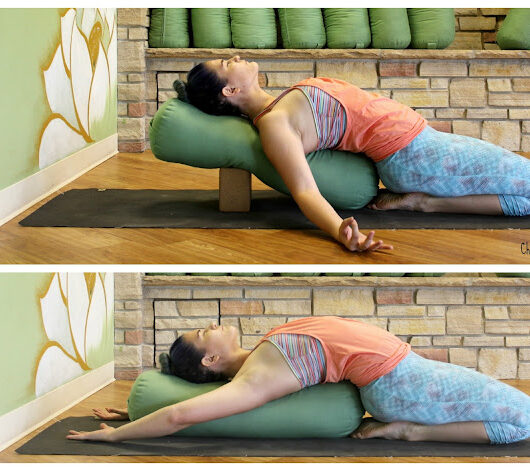
What it does
Opens the chest and encourages the head and neck to move backward. Stretches the anterior longitudinal ligament, which can shorten when you spend too much time with your head in a forward position.
How to do it
Lie flat on a mat on the floor with a rolled up blanket or towel placed horizontally under your shoulder blades. Rest your arms out to the sides in a T, palms facing up. Relax and breathe deeply for at least two minutes, gradually working up to as long as 15 minutes.







